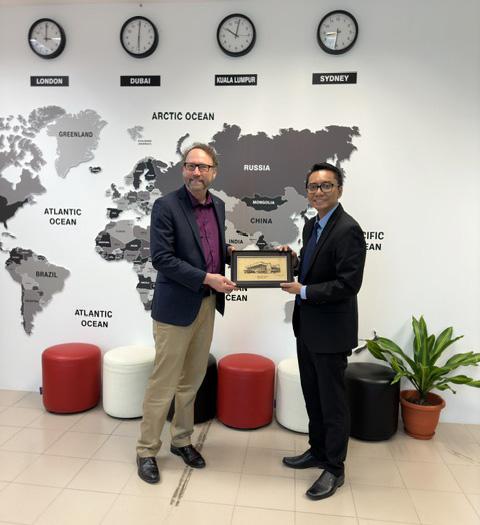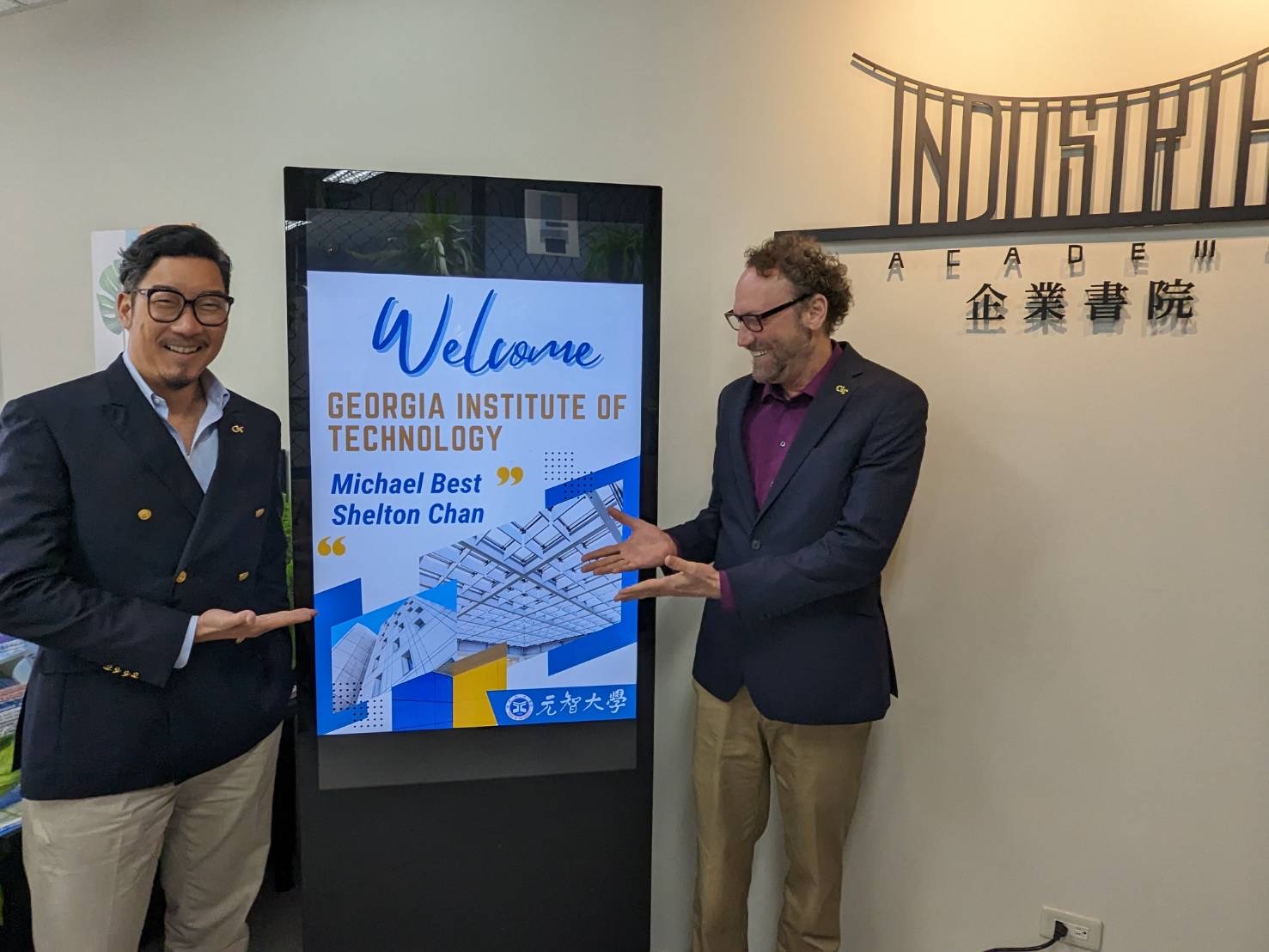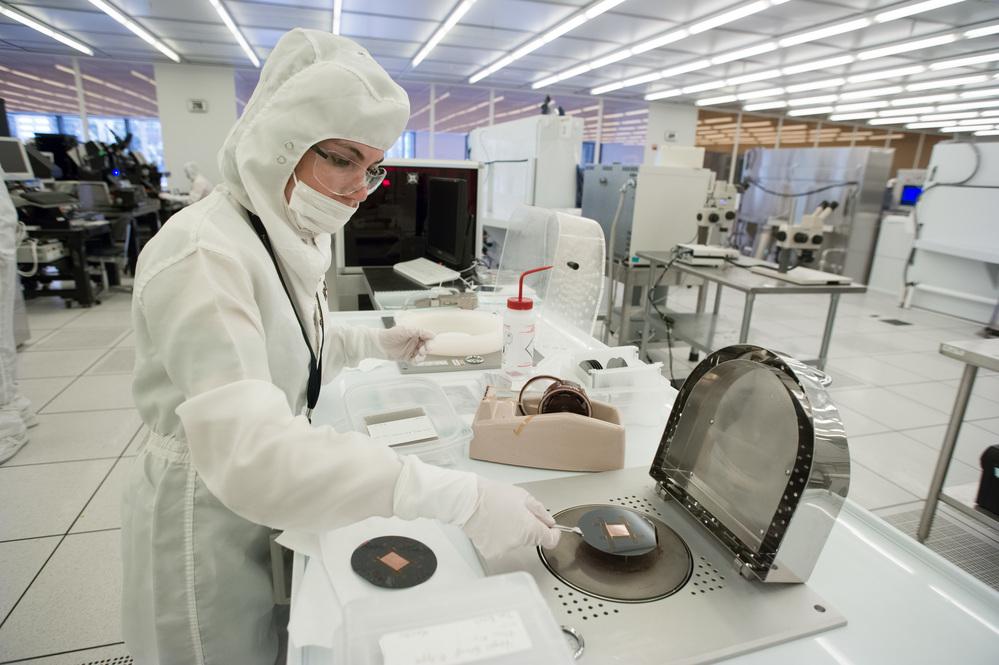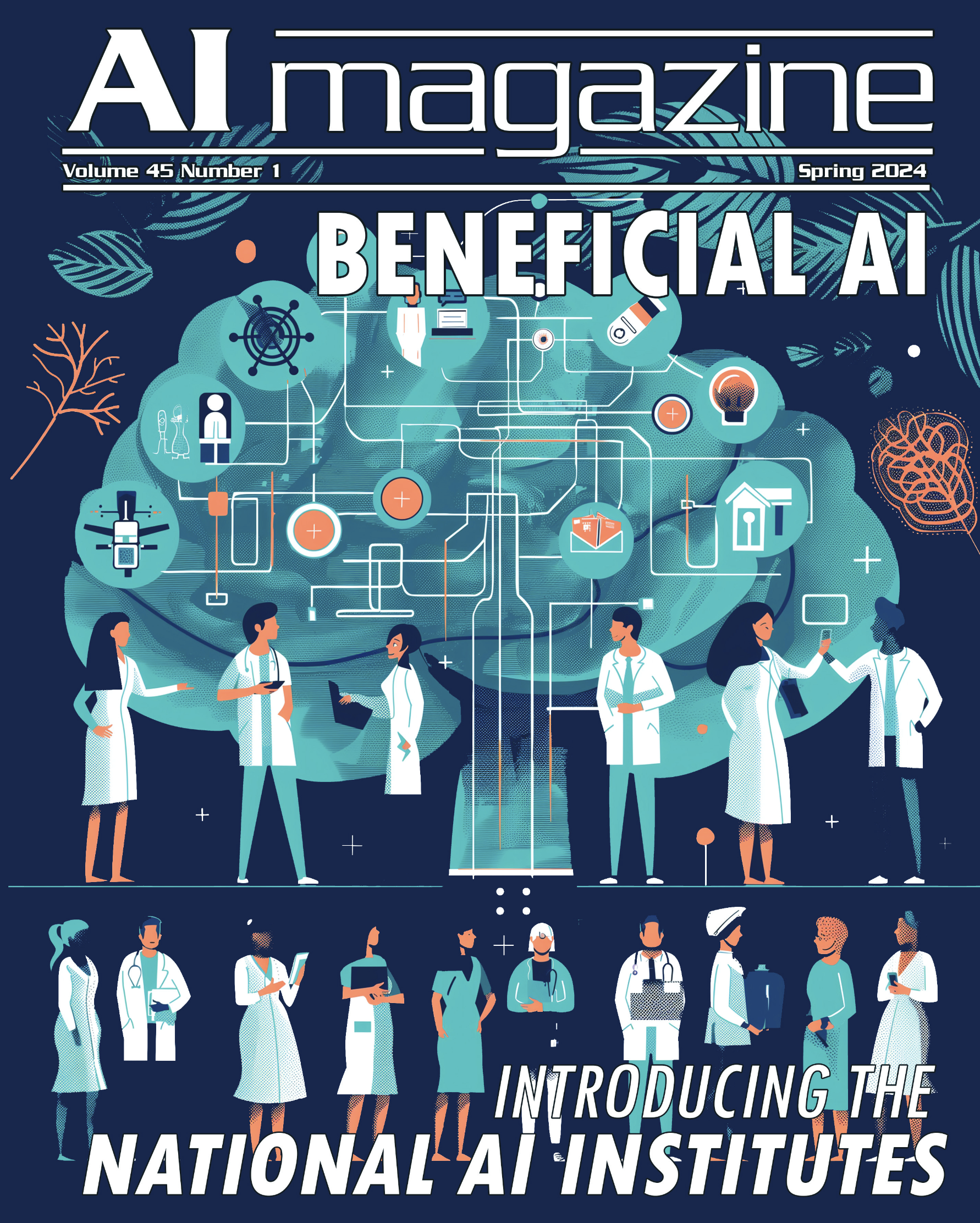Georgia Tech Partners with The Carter Center to Support Guinea Worm Disease Eradication
Apr 09, 2024 —
![A dog in Chad is tethered to prevent the spread of Guinea worm disease. The number of human and animal cases of the disease in Chad dropped by 27% from 2021 to 2022. [Courtesy of Carter Center]](/sites/default/files/styles/news_first_image/public/news-images/tethered-dog-in-chad.jpg?itok=RtN2MnxA)
A dog in Chad is tethered to prevent the spread of Guinea worm disease. The number of human and animal cases of the disease in Chad dropped by 27% from 2021 to 2022.
Photo Courtesy of the Carter Center
Georgia Institute of Technology (Georgia Tech) researchers have teamed up with The Carter Center to support dracunculiasis eradication efforts, using mathematical modeling and analytics. Dracunculiasis, or Guinea worm disease (GWD), is caused by the parasite Dracunculus medinensis. Currently, there is no diagnostic test to detect pre-patent infection, no vaccine, and no treatment for GWD. Eradication efforts focus on community-based surveillance, health education, targeted treatment of water sources with larvicide, and most importantly, behavioral changes, such as filtering drinking water and preventing humans and animals, mainly domesticated dogs with emerging worms, from entering and contaminating water sources. “Given the year-long life-cycle of the disease, mathematical modeling is a valuable tool for fine-tuning interventions and evaluating resource allocation decisions,” said Pinar Keskinocak, professor in the School of Industrial and Systems Engineering (ISyE) and the director of the Center for Health and Humanitarian Systems.
Disease Dynamics
Dracunculus medinensis is a parasite that infects in a vicious cycle. When a human or animal host ingests either water contaminated with infective Guinea worm larvae or raw or undercooked aquatic animals that harbor the infectious larvae, the larvae mate in the host’s body, and, after 10-14 months, a pregnant female worm that can be as long as one meter emerges slowly and painfully from the host’s body. To seek relief, the host might immerse the affected body part into a water source (e.g., a pond), releasing the worm’s larvae into the water source, contaminating it, and continuing the infection cycle. In particular, worms emerging from dogs can contaminate drinking water sources used by people and in turn, lead to infection of people or other dogs in the community.
Progress Toward GWD Eradication
GWD eradication efforts worldwide have been supported by the collaboration of many entities, including The Carter Center, ministries of health in endemic countries, WHO, CDC, UNICEF, and others. Since 1986, The Carter Center has led the international Guinea worm eradication campaign, which has eliminated the ancient disease in 16 countries in Africa and Asia. In 2022, Guinea worm was reported in five African countries.
Together with The Carter Center and Chad’s national Guinea Worm Eradication Program, Georgia Tech researchers have developed an agent-based simulation model that incorporates the life-cycle of the worm, daily interactions between dogs and water sources, seasonality of infections, and environmental factors such as rainfall and temperature. The models can also capture the influence of dog movement between multiple regions/water sources. Using these mathematical models in a wide range of simulated scenarios, the researchers evaluated the impact of combinations of interventions (such as water treatment or tethering of dogs). The results from the simulated scenarios suggest that historical levels of interventions in Chad, even when adjusted to regional differences, might not be sufficient to interrupt GWD transmission in dogs within the next five years. Hence, there is a need to improve intervention implementation fidelity, adjust implementation approaches, or implement new interventions.
GWD Eradication Onward
New interventions, such as a diagnostic test that can detect pre-patent infection, could help accelerate the progress toward eradication. To guide research and development of such a test, WHO initiated the development of target product profiles (TPPs), outlining preferred and minimally acceptable criteria for novel diagnostic tests, which could be, according to WHO, “a game changer in speeding up a global eradiation of the parasite.”
Georgia Tech researchers adapted an agent-based simulation model and evaluated a wide range of scenarios to assess the impact of a new diagnostic test to detect pre-patent infection in dogs on the disease spread. In the mathematical model, each dog is represented by an "agent," which mimics the dog behavior, their interactions with the water source, and the progression of the disease within a dog.
In the absence of a treatment for GWD, the research results quantify the impact of the diagnostic accuracy (sensitivity and specificity) of the test, but also emphasize the importance of rollout decisions and the compliance of dog owners with the recommended tethering practices. “The potential benefits of testing depend on test accuracy, but also on several other factors, e.g., how the test is deployed, and how it affects owners’ behaviors regarding tethering of dogs with positive or negative test results,” said Hannah Smalley, a research engineer in ISyE. “For example, even if the test could detect pre-patent infections in dogs with perfect accuracy, if dogs are not tested frequently enough, or if owners do not consistently tether test-positive dogs, then the impact of such a diagnostic test could be limited.” The timing of when, i.e., how far in advance of worm emergence, the test can detect pre-patent infection is also important. For example, if the test could not only detect pre-patent infection but also accurately estimate the timing of worm emergence, this could increase the owners’ compliance with tethering recommendations during the time period leading to estimated worm emergence, reduce the need for long-term tethering, and reduce the resources (human and financial) needed to support the intervention.
Recommendations from the research are included in the WHO’s TPP for a diagnostic test to detect pre-patent Guinea worm infections in animals. “This important research highlights how a novel diagnostic test that can detect pre-patent Guinea worm infections could help, especially if used in conjunction with existing interventions,” said Adam Weiss [Director of The Carter Center’s Guinea Worm Eradication Program], “and we are looking forward to continuing our collaborations with Georgia Tech as a means to support GWD eradication efforts.”
“Potential Impact of a Diagnostic Test for Detecting Prepatent Guinea Worm Infections in Dogs,” Hannah Smalley, Pinar Keskinocak, Julie Swann, Christopher Hanna, and Adam Weiss, The American Journal of Tropical Medicine and Hygiene, 2024, DOI: https://doi.org/10.4269/ajtmh.23-0534
Media Contact: Tess Malone, Senior Research Writer/Editor
tess.malone@gatech.edu
Bringing Them Home
Hear how technology, research, soft diplomacy, relationship building, AI, and other strategies help find our missing personnel from past conflicts with Kelly McKeague, Georgia Tech alumnus and director of defense at POW/MIA Accounting Agency. Reception to follow presentation. RSVP requested.
Education in the Age of AI
Explore the future of education and unlock the power of AI in academia! dive into an enlightening exploration of how artificial intelligence is set to revolutionize the university experience.
Convergence Innovation Competition Expanding to Asia
Apr 04, 2024 —

Michael Best with professor Andri Andriyana, director, International Relations Centre at the Universiti Malaya.
The Convergence Innovation Competition (CIC), one of Georgia Tech’s oldest and most storied innovation competitions, is expanding to five Asian countries: China, Malaysia, Taiwan, Thailand, and Vietnam. Founded in 2007, the competition is organized by the Institute for People and Technology (IPaT) and has been sponsored in the past by AT&T, Verizon, Google, Cisco, Siemens, Panasonic, NTT, and other companies.
CIC aims to build entrepreneurial confidence, people-centered mindsets, and encourage innovation while responding to today’s global challenges and opportunities. Innovative projects in the contest are expected to align with the 17 United Nations sustainability goals and can fall within IPaT’s current research focus areas.
“It seemed only natural that the Convergence Innovation Competition would one day expand beyond our campus walls,” said Michael Best, executive director of IPaT and professor with the Sam Nunn School of International Affairs. “Georgia Tech attracts talent across the world and our researchers collaborate with many international institutions and faculty. With the Asian expansion of CIC, we are creating a competition where global teams can tackle global challenges, showcasing meaningful innovations which align with IPaT’s people-centered research.”
During his most recent and very tightly scheduled Asian innovation competition roadshow tour this spring, Best visited Sun Yat-sen and Yuan Ze University in Taiwan; Universiti Tenaga Nasional, Universiti Malaya, Multimedia University, and Universiti Putra in Malaysia; and King Mongkut's University of Technology North Bangkok in Thailand.
All of these universities were excited to partner with Georgia Tech and be among the first southeast Asian anchor universities to help sponsor and support the competition according to Best who is also a professor in the School of Interactive Computing.
Best was specifically seeking to identify faculty fellows at each university who would be responsible for advertising the CIC Asia opportunity among students at their university, encouraging team submissions, while also providing advice and mentorship to participating student teams.
As added support, the Shenzhen Georgia Tech Education Foundation is helping to organize this year’s competition with the assistance of Shelton Chan, managing director of the foundation.
CIC semi-finalists will receive travel support to attend a gala competition on December 7th in Taiwan. The finalist will go on to receive travel support to visit innovation events and engage with entrepreneurship programs at Georgia Tech in Atlanta. In addition, the semi-finalist teams will receive $1,000 while the finalist team will receive $2,000 to help launch their ideas.
Detailed information about this year’s Asian Convergence Innovation Competition can be found here: https://research.gatech.edu/ipat/cic

Shelton Chan, managing director of the Shenzhen Georgia Tech Education Foundation, with Michael Best
Walter Rich
LuminAI: A Performance Collaboration of Dance and AI
Join KSU and Georgia Tech for the world's first human/AI improvised dance performance. This event is free to attend. Funded in part by NSF Grant 2123597.
Empowering Research Faculty: Georgia Tech’s Strategic Plan
Apr 02, 2024 —

A research scientist from the Institute for Electronics and Nanotechnology (IEN) works in a clean room at the Marcus Nanotechnology Building. Research faculty are the non-tenure track faculty who carry out crucial research in labs, centers, and departments across campus. (Credit: Rob Felt)
Georgia Tech is supporting career growth for its research faculty, who do critical work at the heart of the research enterprise.
The word faculty is often synonymous with tenure-track professors — the individuals who teach courses and run major labs with their surnames in the title. But while groundbreaking discoveries regularly happen at Georgia Tech, the people doing the day-in, day-out research aren’t always visible.
Research faculty are non-tenure track faculty who carry out crucial research in labs, centers, and departments across campus. They are the lifeblood of research enterprises at major universities like Georgia Tech, but their work often occurs behind the scenes.
To support these essential employees, Georgia Tech launched an initiative to recognize and develop research faculty, who comprise 60% of the nearly 4,400 total faculty currently employed at the Institute. It is part of the second phase of Research Next, the strategic plan for Georgia Tech’s research enterprise.
Maribeth Coleman, interim assistant vice provost for Research Faculty, and Michelle Rinehart, vice provost for Faculty, were appointed as co-chairs of a Research Next implementation team tasked with finding ways to recognize, support, and retain research faculty. Building on years of effort and collaboration with campus partners, the group took on several projects to improve the research faculty experience and environment at Georgia Tech.
“Research faculty are critical members of the Georgia Tech community, and their contributions to our billion-dollar research enterprise and the state’s economic development cannot be overstated,” Rinehart said. “We wanted to understand what it’s like for research faculty as they come on board at Georgia Tech, what the hiring process is like, and how we as an Institute can more effectively mentor and develop research faculty in terms of advancing in their careers.”
At the outset, the implementation team identified and examined several facets of the research faculty experience. They reviewed policies in the faculty handbook, giving special attention to existing guidance for promotion and career growth for research faculty.
Promotion guidelines are generally clear for tenure-track faculty. Research faculty, on the other hand, are often not actively encouraged to seek promotion, and may not even know that promotion is an option, according to Rinehart and Coleman. One issue is that funding for research faculty often comes from external research dollars. At least nine months of a tenure-track faculty member’s salary, however, comes from the state budget.
“When you’re constantly having to bring in all of your own salary, as research faculty do, it can be a stressful experience,” Coleman said. “It can also mean you’re more isolated, because you’re focused on bringing in those research dollars that will help you keep your position. But we want research faculty to know that we want them to build their careers here.”
To address these issues, the team developed reference materials and workshops for research faculty seeking promotion. The workshops are offered on a regular basis, and resources and recordings are available on the Georgia Tech faculty website. The team also created educational materials for promotion committees, often composed of tenure-track faculty who are unfamiliar with the research faculty experience.
“We saw a need for better consistency across campus with regards to guidance for research faculty promotion committees,” Rinehart said. “Tenure-track faculty need guidance on not just how to properly hire research faculty, but also in how to mentor and retain them.”
According to Coleman and Rinehart, the implementation team’s most significant achievement was the launch of a research faculty mentoring network. The mentoring network connects junior research faculty mentees with senior research faculty mentors who have grown their careers at Georgia Tech.
“When new tenure-track faculty arrive, they are usually assigned a mentor within their School or department, but that method doesn’t generally work for research faculty,” Coleman said. “There may not be a large research faculty community in their unit, and research faculty roles and responsibilities vary significantly from person to person. For this reason, the mentoring network is meant to foster cross-pollination and build community across units.”
The mentoring network is a collaboration with MentorTech, a program run by Georgia Tech Professional Education. The program is ongoing, and enrollment is always open.
To foster inclusivity and belonging, the team established an orientation program for research faculty, modeled after the tenure-track faculty orientation. The Provost’s Office hosted the inaugural research faculty orientation in Fall 2023. Because research faculty are hired throughout the year, the team decided the orientation should take place semiannually. The second orientation took place on March 13.
In addition to the workshops, mentor network, and orientations, the implementation team also launched a program to welcome research faculty in a personal way. When a new research faculty member is hired, another more senior research faculty member is assigned to welcome them in person, provide them with important information for getting oriented to campus, tell them about relevant professional opportunities, and give them Georgia Tech-branded swag.
“All of this work is about recognizing that research faculty are a tremendously valuable part of our community,” Rinehart said. “They also really enhance our reputation internationally.”
According to Coleman, research faculty can sometimes be viewed as disposable, because of their support from grants that may be limited in time and scope. But she believes that line of thinking is a disservice to both the individual and the Institute.
“It’s important that we recognize the value of research faculty, nurture them, and retain them long term,” she said. “We need to make it possible for people to spend their careers here, as I have, and help make sure research faculty positions at Georgia Tech can be both viable and fulfilling long-term careers.”
To read more about Georgia Tech's strategic research initiatives, visit the Research Next website.
Catherine Barzler, Senior Research Writer/Editor
Capitalism for Humans
Title: Capitalism for Humans
Beth Kolko
Professor and Associate Department Chair in the Department of Human Centered Design & Engineering
University of Washington.
Human-AI Interaction in Mental Health
Hwajung Hong
Associate Professor
Department of Industrial Design at KAIST
Thursday, Apr 11, 2024
12:00 p.m. Lunch; 12:30 p.m. Talk
Special Edition of 'AI Magazine' Spotlights Georgia Tech's NSF AI Institutes
Mar 28, 2024 —

The cover image was generated by Midjourney, a generative artificial intelligence program and service created and hosted by the San Francisco–based independent research lab Midjourney, Inc. Midjourney generates images from natural language descriptions, called prompts, similar to OpenAI's DALL-E and Stability AI's Stable Diffusion, responding to a prompt that included notions of, “people from various professions (teachers, nurses, farmers, engineers, and artists), working together to create and guide AI to facilitate collaboration, innovation, and problem-solving for the common good.” While this is a challenging concept for man or machine to represent in a single image, this issue’s articles describing the U.S. National AI Research Institutes will paint richer portraits.
The Association for the Advancement of Artificial Intelligence released its Spring 2024 special issue of AI Magazine (Volume 45, Issue 1). This issue highlights research areas, applications, education initiatives, and public engagement led by the National Science Foundation (NSF) and USDA-NIFA-funded AI Research Institutes. It also delves into the background of the NSF’s National AI Research Institutes program, its role in shaping U.S. AI research strategy, and its future direction. Titled “Beneficial AI,” this issue showcases various AI research domains, all geared toward implementing AI for societal good.
The magazine, available as open access at https://onlinelibrary.wiley.com/toc/23719621/2024/45/1, a one-year effort, spearheaded and edited by Ashok Goel, director of the National AI-ALOE Institute and professor of computer science and human-centered computing at Georgia Tech, along with Chaohua Ou, AI-ALOE’s managing director and assistant director, Special Projects and Educational Initiatives Center for Teaching and Learning (CTL) at Georgia Tech, and co-author Jim Donlon, the NSF's AI Institutes program director.
In this issue, insights into the future of AI and its societal impact are presented by the three NSF AI Institutes headquartered at Georgia Tech:
- AI-ALOE: National AI Institute for Adult Learning and Online Education
- Introduction to the Special Issue by Ashok Goel and Chaohua Ou.
- The magazine features AI-ALOE’s work in reskilling, upskilling, and workforce development, showcasing how AI is reshaping adult learning and online education to prepare our workforce for the future.
- AI4OPT: AI Institute for Advances in Optimization
- An overview of AI4OPT’s efforts in combining AI and optimization to tackle societal challenges in various sectors. The institute aims to create AI-assisted optimization systems for efficiency improvements, uncertainty quantification, and sustainability challenges, while also offering educational pathways in AI for engineering.
- AI-CARING: National AI Institute for Collaborative Assistance and Responsive Interaction for Networked Groups
- AI-CARING’s section in the magazine details its comprehensive approach to using AI technologies to address the complex needs of aging adults, while navigating ethical considerations and promoting education in the field.
- Co-authors contributing to AI-CARING's section include Sonia Chernova, associate professor at Georgia Tech and director of AI-CARING, along with members Elizabeth Mynatt, Agata Rozga, Reid Simmons, and Holly Yanco, all involved in AI-CARING research and education.
The magazine provides a comprehensive overview of how each of the 25 institutes is shaping the future of AI research.
About 'AI Magazine'
AI Magazine is an artificial intelligence magazine by the Association for the Advancement of Artificial Intelligence (AAAI). It is published four times each year, and is sent to all AAAI members and subscribed to by most research libraries. Back issues are available online (issues less than 18 months old are only available to AAAI members).
The purpose of AI Magazine is to disseminate timely and informative articles that represent the current state of the art in AI and to keep its readers posted on AAAI-related matters. The articles are selected to appeal to readers engaged in research and applications across the broad spectrum of AI. Although some level of technical understanding is assumed by the authors, articles should be clear enough to inform readers who work outside the particular subject area.
To learn more, click here.
Breon Martin
AI Research Communications Manager
Georgia Tech
Sounding Out: Works in Progress at the Sports/Sound Nexus
How are sports shaped by sounds? How are artists, musicians, media producers, scholars, and sport practitioners uniquely situated to develop new possibilities for exploring the sport/sound nexus?
